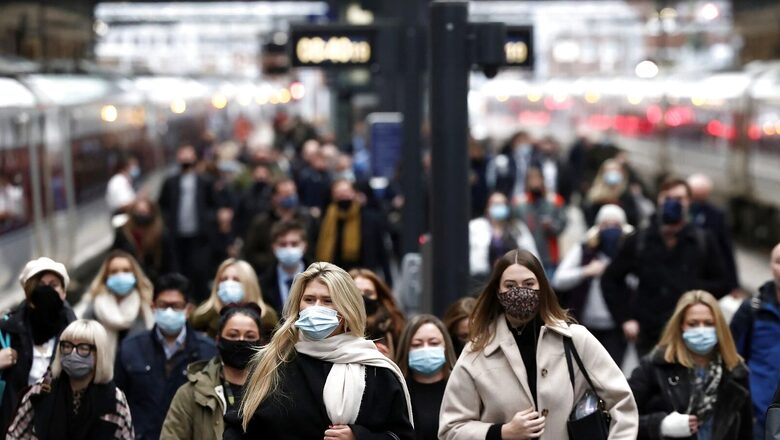
views
As the Omicron variant gains momentum in Europe and the United States, scientists are rewriting their expectations for the COVID-19 pandemic next year.
Only a few weeks ago, disease experts predicted that countries would begin to recover from the pandemic in 2022, following a series of surges caused by the Alpha, Beta, Gamma, and Delta variants. The first would be populations that have had significant exposure to the coronavirus through a combination of infections and vaccination.
In those places, COVID was expected to ease into an endemic disease, hopefully with less-severe periodic or seasonal outbreaks. Vaccines, available for much of 2021 only in wealthy nations, could reach the majority of the global population by the end of the year ahead.
But the rapid spread of the highly-mutated Omicron variant, identified in late November, and its apparent ability to reinfect people at a higher rate than its predecessors, is undermining that hope, Reuters has reported.
Already, countries are reverting to measures used earlier in the pandemic: restricting travel, reimposing mask requirements, advising against large gatherings for the winter holidays. While it is not quite back to square one, much more of the world will need to be vaccinated or exposed to COVID to get past the worst of the pandemic, disease experts told Reuters.
“People are sick of the pandemic and God knows I am, but unless we can get some urgency to compel our leaders to take action, I really see 2022 being a lot of more of the same that we saw in 2021,” said Dr. Angela Rasmussen, a virologist at the Vaccine and Infectious Disease Organization at the University of Saskatchewan in Canada.
Even after COVID becomes a more endemic disease, new variants will spawn outbreaks and seasonal surges for years to come.
“There’s always going to be a baseline number of COVID cases, hospitalizations and deaths,” Dr. Amesh Adalja, an infectious disease expert at the Johns Hopkins Center for Health Security told Reuters. “A lot of people haven’t come to terms with that.”
The hope is that the virus diminishes to the point where it is no longer disruptive. But living with COVID-19 does not mean the virus is no longer a threat.
Instead, people will need to be ready to adjust when the next variant comes along, Dr. Tom Frieden, chief executive of Resolve to Save Lives, a global public health initiative, and former director of the U.S. Centers for Disease Control and Prevention told Reuters. “You need to recognize that at certain times, it’s going to be safer to do things than at other times.”
PANDEMIC PHASE ENDING IN 2022?
Some scientists are not entirely ready to abandon hope that some parts of the world will emerge from the pandemic next year. More than 270 million people have been infected with COVID, according to the World Health Organization, while an estimated 57% of the global population has received at least one vaccine dose, representing potential protection that did not exist two years ago.
“Even if that immunity is not as good against Omicron, it doesn’t mean that it’s worthless. And that immunity is more effective against serious illness than it is against getting infected at all,” said Dr. David Dowdy, an infectious disease epidemiologist at Johns Hopkins.
So far, most of the studies looking at the effectiveness of vaccines against Omicron have focused on neutralizing antibodies, which latch on to the virus and prevent it from entering and infecting cells. Blood test results from fully vaccinated people show Omicron has learned to escape neutralization; a booster dose might restore that protection.
Immune system T cells, which destroy infected cells, also appear still to be able to recognize the variant. Many experts believe this second line of defense will prevent hospitalizations and deaths.
“You still have a lot of people who are susceptible” because they are not yet vaccinated, Dr. Celine Gounder, an infectious disease specialist at New York University told Reuters. She said that was among the reasons she believes it will be some time before the world moves from pandemic to endemic COVID-19.
In the meantime, living with COVID in 2022 will likely mean assessing local risks and protecting oneself through vaccination, masking and social distancing.
“When I go to the store this afternoon, what helps me is to know how much COVID is in my community,” said Dr. Robert Wachter, chair of the Department of Medicine at University of California, San Francisco.
“There will not be one state of the pandemic. There will be different states for different people and for different regions,” he said. “And that’s going to be the way it is for the foreseeable future.”
With inputs from Reuters.
Read all the Latest News here




















Comments
0 comment